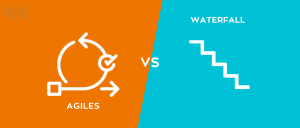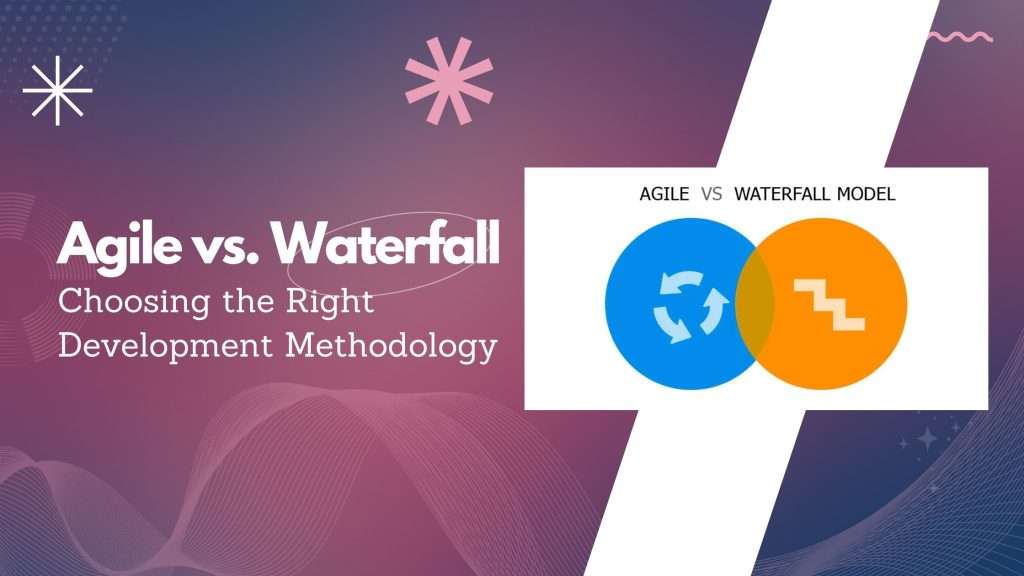The debate between agile and waterfall has been going on for years, with proponents of both sides making compelling arguments. So how do you choose the right development methodology for your project?
There are a few key factors to consider when making this decision:
1. The nature of the project. Is it something that can be easily divided into smaller tasks? Or is it a large, complex project that will need to be completed in phases?
2. The team’s strengths and weaknesses. Does the team work better when given clear instructions and deadlines? Or do they prefer more flexibility and autonomy?
3.The client’s needs and expectations. Are they looking for a product that is delivered quickly and efficiently? Or are they willing to trade some speed for a higher quality product?
After carefully considering all of these factors, you should have a good idea of which methodology will work best for your particular situation.
What is Agile Development?
Agile development is an iterative, incremental software development methodology that emphasizes flexibility, collaboration, and customer satisfaction. It is based on the Agile Manifesto, which was created by a group of software developers in 2001.
The main goal of agile development is to produce working software quickly and efficiently, while maintaining a high level of quality. To do this, agile teams use short “sprints” or iterations to plan, build, and test new features. They also constantly communicate with customers or stakeholders to get feedback and make sure the final product meets their needs.
Compared to the waterfall method, agile development is much more flexible and can adapt to changes more easily. It is also better suited for projects with uncertain requirements or that are likely to change over time.
What is Waterfall Development?
Waterfall development is a traditional, linear approach to software development. In waterfall, each phase of the project must be completed before moving on to the next phase. This can often lead to delays and frustration if changes need to be made during the later stages of the project, as earlier phases may need to be revisited.
The Waterfall model is a sequential design process, often used in software development processes, in which progress is seen as flowing steadily downwards (like a waterfall) through the phases of conception, initiation, analysis, design, construction, testing, production/implementation and maintenance.
Key Differences Between Agile and Waterfall Development
There are key differences between agile and waterfall development that can help you choose the right methodology for your project. Agile development is focused on delivering value early and often, while waterfall development is focused on delivering a complete product all at once.
Agile methodology relies heavily on collaboration and customer feedback to guide development, while waterfall methodology relies more on detailed planning up front. agile projects are typically much shorter than waterfall projects, and there is more flexibility in agile to make changes along the way.

Benefits of Agile and Waterfall Development
There are many benefits to choosing the right development methodology for your project. The wrong methodology can lead to cost overruns, schedule delays, andScope creep.
Benefits of Agile Development:
1.Allows for constant feedback and course corrections– This is beneficial because you can learn from mistakes and make changes quickly without having to start from scratch.
2.Focuses on delivering value early and often– This is beneficial because it allows you to get feedback from customers and make sure you are on the right track. It also allows you to release features as they are completed instead of waiting for the entire project to be finished.
3.Empowers cross-functional teams- This is beneficial because it allows for different disciplines to work together and share knowledge which leads to a more efficient workflow.
4.Encourages close collaboration with stakeholders– This is beneficial because it helps ensure that everyone is on the same page and that there are no surprises when the project is delivered.
5.Is flexible and can adapt to changes– This is beneficial because it allows you to respond quickly to changes without having to redo plans or rework code.
6 .Is scalable– This is beneficial because it can be easily adopted by large organizations with multiple teams working on different projects simultaneously.
7 .Has a proven track record– Agile has been around for over 20 years and has been used successfully on thousands of projects .
Benefits of Waterfall Development:
1.Provides clarity on requirements- This is beneficial because it allows you to define the scope of the project before development begins, reducing scope creep and avoiding surprises during the development process.
2.Is easier to plan for- This is beneficial because it allows you to accurately estimate resources and cost up front and manage risk accordingly.
3.Ensures that quality control standards are met – This is important in ensuring that the final product meets customer expectations.
4.Results in a single deliverable – This helps ensure that there are no misunderstandings or confusion about what has been delivered.
5.Enables accurate documentation– This is important for meeting regulatory compliance requirements and for providing visibility into how the project was completed.
6.Is easier to manage large scale projects – This is beneficial when working on complex projects with multiple teams.
Pros & Cons of Agile vs. Waterfall
There are many tradeoffs to consider when choosing a development methodology. Two of the most common development methodologies are Agile and Waterfall. Here we will discuss the pros and cons of each approach to help you choose the right one for your project.
Agile Pros:
–Flexibility: Because agile is iterative, it allows for changes to be made along the way as new information or feedback arises.
–Speed: Agile methodology emphasizes delivering working software quickly, which can be beneficial if time to market is a key driver for your project.
–Better Quality: Due to the frequent testing and reviews built into agile, potential defects are caught early on and overall quality is usually better than with waterfall.
Agile Cons:
–Not Suitable for all Projects: If requirements are very well understood up front and are not likely to change, waterfall may be a better approach since it can be more efficient in this case.
–Can be Less Predictable: Since agile relies on deliverables being completed in short cycles, there is less predictability in terms of when the final product will be delivered. This can be challenging from a planning standpoint.
Waterfall Pros:
–Efficient for Well Understood Projects: When requirements are understood up front and aren’t expected to change much, waterfall can be very efficient since all phases must be completed before moving on to the next one.
–Predictable Schedule: Due to the linear nature of the approach, it can be easier to predict when the final product will be delivered.
–Complete Documentation: Due to its linear nature and detailed requirements gathering up front, waterfall is often accompanied with comprehensive documentation.
Waterfall Cons:
–Inflexible: Since changes can’t occur until a phase is completed, the project may take longer due to accommodating these changes.
–No Working Software Early On: Unlike agile which demonstrates working software early on, it may take some time with waterfall before any working code is available. One way around this is to have prototyping activities included early on in the process which may help bridge this gap.
Choosing the Right Methodology for Your Project
There is no one-size-fits-all answer when it comes to choosing the right methodology for your project. The best approach is to understand the key characteristics of each methodology and then select the one that best aligns with the specific needs of your project.
Agile methodology is a great choice for projects that are characterized by high levels of uncertainty and change. Agile methods are designed to deal with changing requirements and deliver working software quickly. The main goal of agile is to help teams adapt to change and respond to feedback quickly. Waterfall, on the other hand, is better suited for projects with well-defined requirements where there is little room for changes. Waterfall methods are typically used in more traditional industries such as construction or manufacturing.
Some factors you should consider when choosing a methodology include:
• How much uncertainty is there in the project?
• How important is it to get working software quickly?
• Is there a need for close collaboration between different team members?
• Are changes likely to occur during the project?
• What kind of environment will the project be developed in (traditional or non-traditional)?
Conclusion
Ultimately, when it comes to choosing the right software development methodology for your business, you should consider both Agile and Waterfall. Ultimately, it depends on the type of project you are doing and how successfully you want to implement that project. If done correctly with an experienced team, each of these methodologies can help build robust systems that will benefit your organization or clients. With thoughtful consideration based on both approaches, companies can choose which technology is best suited for their individual needs.

